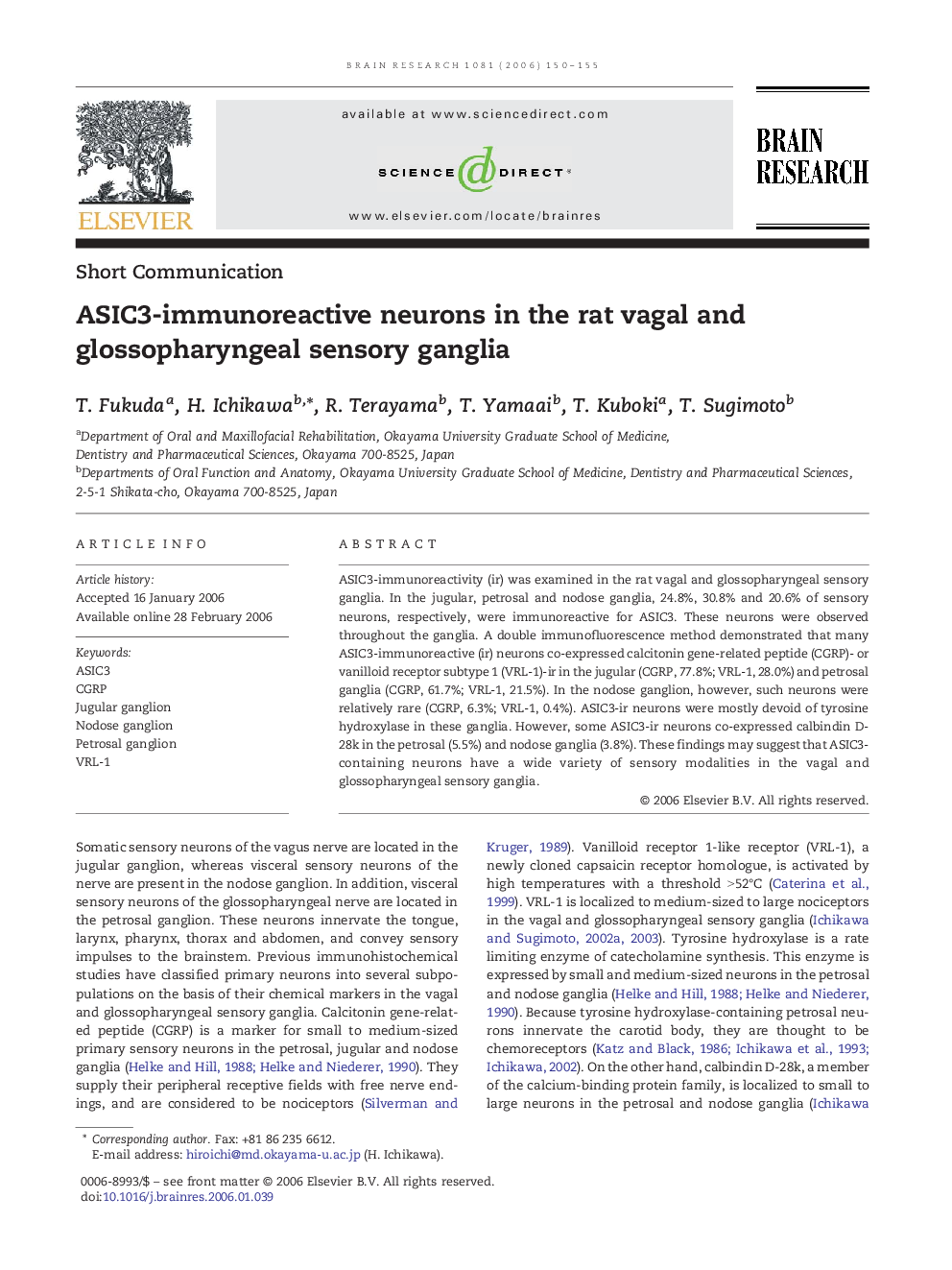| Article ID | Journal | Published Year | Pages | File Type |
|---|---|---|---|---|
| 4332937 | Brain Research | 2006 | 6 Pages |
ASIC3-immunoreactivity (ir) was examined in the rat vagal and glossopharyngeal sensory ganglia. In the jugular, petrosal and nodose ganglia, 24.8%, 30.8% and 20.6% of sensory neurons, respectively, were immunoreactive for ASIC3. These neurons were observed throughout the ganglia. A double immunofluorescence method demonstrated that many ASIC3-immunoreactive (ir) neurons co-expressed calcitonin gene-related peptide (CGRP)- or vanilloid receptor subtype 1 (VRL-1)-ir in the jugular (CGRP, 77.8%; VRL-1, 28.0%) and petrosal ganglia (CGRP, 61.7%; VRL-1, 21.5%). In the nodose ganglion, however, such neurons were relatively rare (CGRP, 6.3%; VRL-1, 0.4%). ASIC3-ir neurons were mostly devoid of tyrosine hydroxylase in these ganglia. However, some ASIC3-ir neurons co-expressed calbindin D-28k in the petrosal (5.5%) and nodose ganglia (3.8%). These findings may suggest that ASIC3-containing neurons have a wide variety of sensory modalities in the vagal and glossopharyngeal sensory ganglia.
